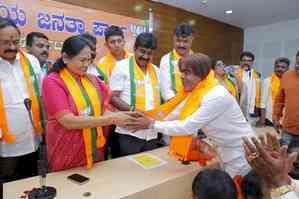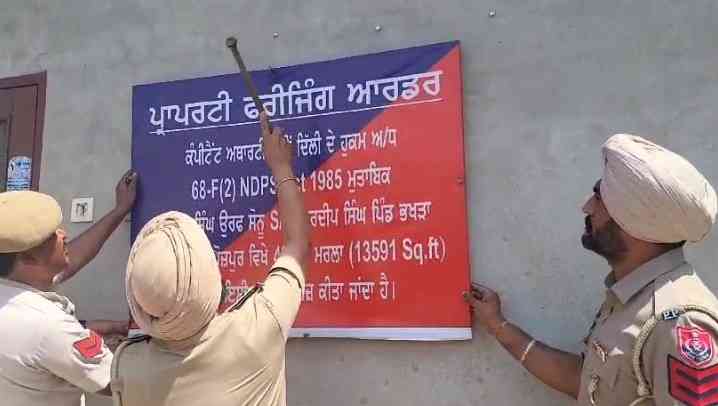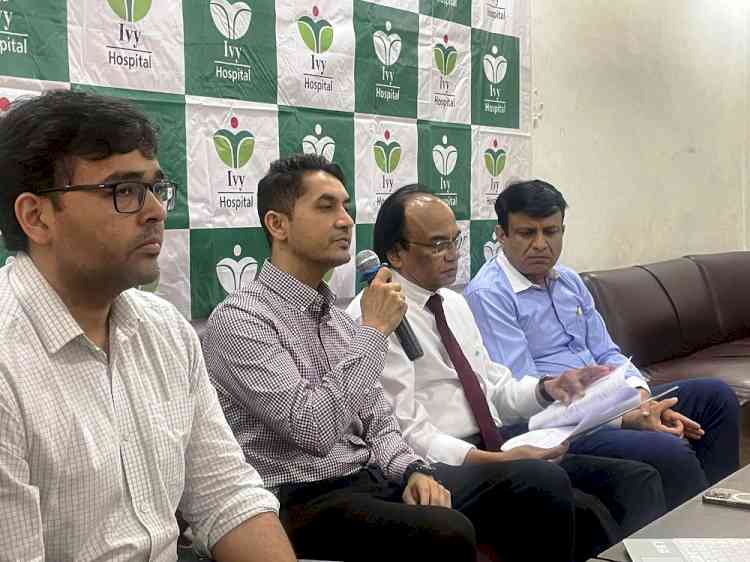Fourth day of Apeejay Svran International Design and Performing Arts Week
Author(s): Rajat KumarA photograph re;ated to fourth day of Apeejay Svran International Design and Performing Arts Week at Jalandhar. Jalandhar, March 17, 2015: On the fourth day of Apeejay Svran International Design and Performing Arts...


A photograph re;ated to fourth day of Apeejay Svran International Design and Performing Arts Week at Jalandhar.
Jalandhar, March 17, 2015: On the fourth day of Apeejay Svran International Design and Performing Arts Week on Monday, two Faculty Development Programmes were organised by the Department of Design. The learned Dr Ashwani Aggarwal, Prof & Ex-Chairman, Dept. of Ancient Indian History, Culture and Archeology, Punjab University, Chandigarh and Ex-Dean, Faculty of Arts, Punjab University, Dr. Saroj Rani, Head, Dept. of Fine Arts, Punjabi University, Patiala and Prabhjot Kaur, Asst. Prof. Department of Clothing and Textiles, Govt. Home Science College, Chandigarh enlightened the participants as Resource Persons. Anil Gupta, Head, Department of Applied Arts, Rajni Gupta, Head, Department of Design, Rajni Kumar, Dept of Interior Design and Monika Mogla, Head, Department of Commerce extended a floral welcome to the esteemed dignitaries.
With his boundless experience, Dr. Ashwani Aggarwal, acquainted the Foreign Delegates with the traditional forms of Dhurries, Punjabi Jutti, Parandahas, and Nadas etc. He threw light on the technicalities and importance of these objects in traditional Punjab.
Dr. Saroj Rani, the illustrious lady enlightened the audience about 'Phulkari' a type of Duppatta used by Punjabi women. She elaborated her views on the types of Phulkari and Bagh. The origin of Phulkari can be traced back to Harrappan times. Phulkari is made of two words, 'Phul' means Flower and 'Kari' means Craftsmanship. The meaning of 'Bagh' is garden. So in a nutshell, Phulkari and Bagh are symbols of colours and happiness in life of a woman.
Dr. Prabhjot Kaur demonstrated her views on diversified forms of 'Punjabi Jutti'. The use of tilla embroidery, types of leathers used in the manufacturing of Punjabi Jutti. The Foreign Delegates seemed extremely amazed to learn the basics of Punjabi Culture.
In the other Faculty Development Programme, Xia Ping, President, Chengdu Textile College, China, extended a presentation on the topic "Traditional and Modern Arts Education in China". The Brainiac Xia Ping introduced the audience with the prevalent traditions of China in Clothing, Architecture and Painting etc. to the esteemed gathering. He said China has always preserved its culture received from its Ancestors. He introduced the learned delegates with "Dunhuang Grottoes" form of Chinese Architecture and Sculpture. About Chinese Opera, he said there are 300 traditional forms of it. He said China still follows its culture as originated in older times with contemporary change. College Faculty Member, Meenakshi, Department of Textile and Design gave her presentation on 'Kutch' and 'Chicken Kari of Lucknow' Embroidery.
Principal, Dr. Sucharita said, these Faculty Development Programmes prove to be fertile in exchanging the knowledge about intricacies of objects used in different cultures and such Programmes help the aspirants of textile industry in their career.

 cityairnews
cityairnews 















